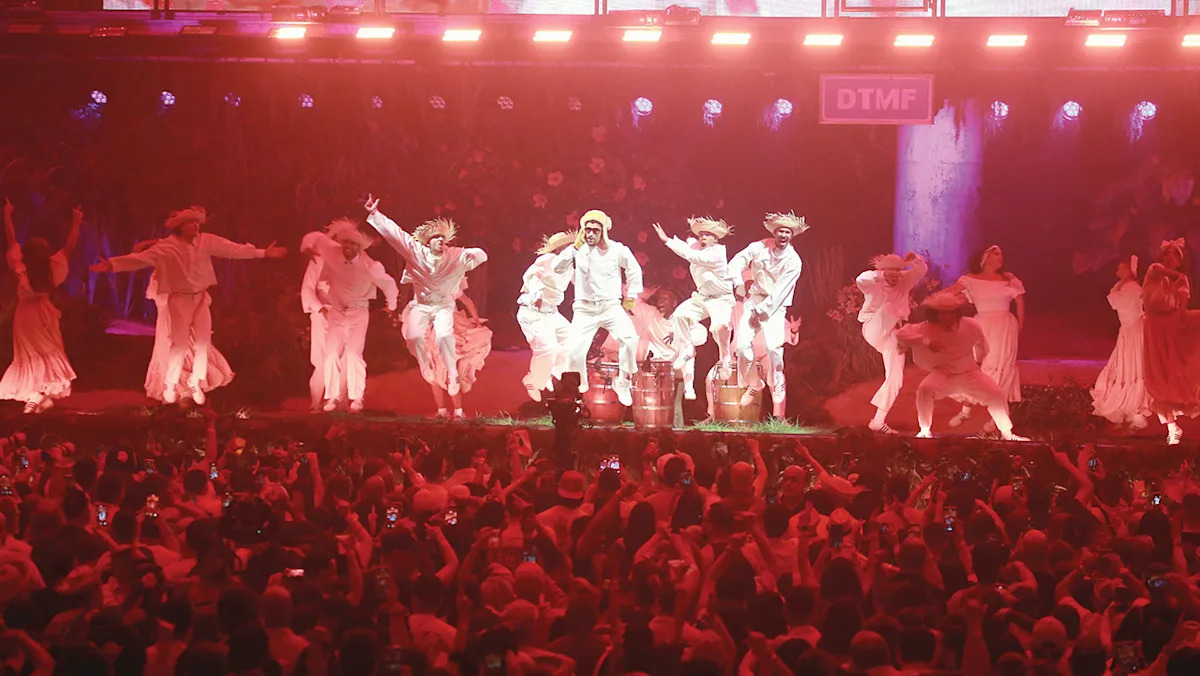In January, Bad Bunny’s latest album, Debí Tirar Más Fotos, quickly topped the charts, dominating streaming platforms for months. Along with its hit status came an unequivocal declaration that tropical music, specifically salsa, was undergoing a renaissance spearheaded by some of the biggest names in reggaetón and Latin trap.
Debí Tirar Más Fotos, a love letter to Puerto Rico, also received a Latin Grammy nomination for album of the year, among other categories, in 2025. The project fuses an array of sounds from salsa to dembow to Puerto Rican bomba and plena, with songs such as “Nuevayol,” which pays tribute to legendary salsa band El Gran Combo de Puerto Rico.
More from The Hollywood Reporter
The music industry’s positive reaction sparks the question: Could 2025 mark the first time Grammy voters recognize such stars as Bad Bunny and Rauw Alejandro as more than urban Latin acts, as cultural catalysts of traditional genres like salsa? This year, the answer is yes.
Regarding the album’s 12 nominations, voter Eduardo Osorio, a longtime music industry insider, songwriter and artist manager, says: “As a member of the Latin Recording Academy, I value that artists are recording music of the genre. Salsa enriches all of us because it’s part of our DNA.”
Gabriel Abaroa, board of trustees member and former CEO of the Latin Recording Academy, is seeing a genre shift. “A decade ago, people thought salsa had come to an end. Marc Anthony, Gilberto Santa Rosa, Víctor Manuelle, La India, Rubén Blades, Luis Enrique and Willie Colón fought to keep it alive,” he says, “but we couldn’t make a new generation emerge in that rhythm until now.”
Alejandro, one of the most popular performers of the past decade, announced to the world that he was a Latin artist in the broadest sense, not just relegated to reggaetón, with his November release of Cosa Nuestra, which features tropical influences and salsa rhythms. For Alejandro, such salsa icons as Frankie Ruiz, Héctor Lavoe and Colón deserve homage, a risk that paid off in his first Latin Grammy nomination for album of the year. “For me, Cosa Nuestra was born from a deep desire to honor our roots. Seeing how people connect with the songs is the greatest reward,” he says. “It’s an essential part of our Caribbean identity. Older generations recognize it immediately, while younger generations have made it their own.”
A Spotify report this year confirmed that Gen Z is leading the way in the rise of listenership for salsa music, with such next-gen salsa artists as Christian Alicea, Luis Figueroa, Moa Rivera, Luis Vázquez and Jonathan Moly releasing work steeped in traditional Latin sounds alongside hitmakers including Manuel Turizo, Danny Ocean and Karol G. And listenership has only grown. Salsa streams have increased by more than 140 percent worldwide in the past five years, nearly doubling in the U.S. Among the most-streamed salsa tracks worldwide the past year are “Baile Inolvidable” by Bad Bunny, “Llorarás” by Dimensión Latina and Oscar D’León, and Frankie Ruiz’s timeless hit “Tú Con Él.” When it comes to the most-shared songs, Alejandro’s version of “Tú Con Él” stands out, as does Anthony’s global anthem “Vivir Mi Vida.”
Arnulfo “AJ” Ramos, head of artist partnerships, Latin music and culture for Google and YouTube, has a theory on what’s driving the cultural shift. “I think it’s the nostalgia factor, a transgenerational bridge between generations. The power of platforms, of YouTube, of creators … if you’ve noticed, it’s a full circle: Everything comes back, now more than ever. Salsa and tropical music have been a soundtrack to our lives, and I think that’s refreshing.”
***
Read more from THR’s Music Issue
This story appeared in the Oct. 1 issue of The Hollywood Reporter magazine. Click here to subscribe.
Best of The Hollywood Reporter
Sign up for THR’s Newsletter. For the latest news, follow us on Facebook, Twitter, and Instagram.

